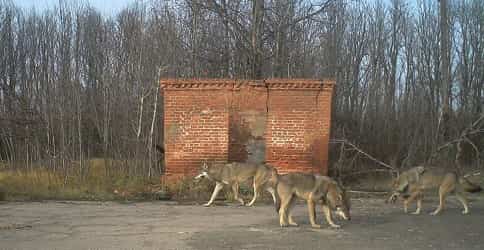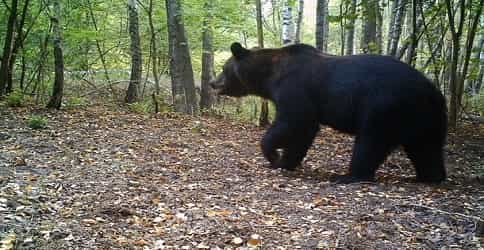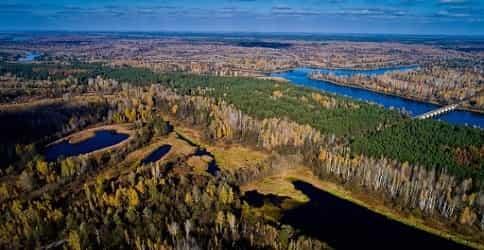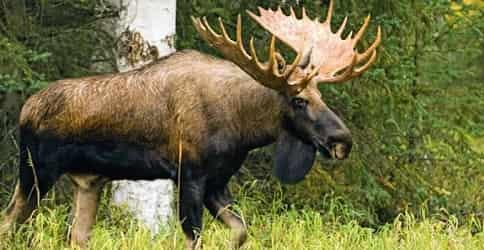Nature returns to the Chernobyl exclusion zone
As part of the documentary project Our Planet, there was a revival of flora and fauna in the exclusion zone. Filming in the Chernobyl area lasted 2 years, with interruptions in the winter. At the end of the project, you could see all the greatness of nature: how it can be recovered even after a monstrous radiation pollution. And it turned out that the key to everything is human non-interference.
1. Camera traps
In order to fully present the picture of events in the exclusion zone, scientists had to use camera traps, which can automatically capture all moving objects that emit heat.

Photo traps in the Chernobyl zone
Over the past decades, wildlife has gradually been restored in this area. Photo traps captured Przhevalsky’s horses with a foal. And their population is growing every year.
2. Wolves, lynxes, deer …
The biosphere reserve of the Chernobyl zone began to work in April 2017. The absence of people in the exclusion zone did its job – unique species of flora and fauna appeared there, despite the radiation background.

Wolves in the Exclusion Zone
In recent years, the population of moose, lynx, deer, wolves and foxes has increased. Scientists have recorded 185 species of birds. It should also be noted that the species of animals associated with human activities – pigeons, mice, rats, and sparrows disappeared.
The established “traps” with photo and video fixation allowed capturing very rare animals, one of which is considered to be the Eurasian lynx. The last time in the territory of the current exclusion zone she was seen more than 100 years ago.

Lynx – returned to the forests of the exclusion zone
Wolves also began to feel very good in the Chernobyl zone and increased their population by seven times, compared with the neighboring “clean” regions. The populations of the largest predators in the exclusion zone of wolves and lynxes in the summer period reach more than 100 individuals each. And this is not surprising, because there are more than 3.0 thousand deer and moose here.
3. The Red Book inhabitants of the zone

Black stork in the Chernobyl zone
In the Chernobyl zone appeared “Red Book” black storks, which always settle far away from people. Also, there are 14 subspecies of bats recorded, 3 of which were listed in the international Red Book – a giant gathering, a pond nightlight, as well as a shirokushka.
4. The brown bear

Brown bear in the forest near the Chernobyl zone
When scientists caught a brown bear in the exclusion zone with a camera trap, this became a sensation, because here these “big bears” disappeared long ago. Over the past decades, the situation is gradually changing for the better.
5. Red Forest
After the Chernobyl accident, the pine forest adjacent to the station on the western side was most affected. As a result of strong radiation, 5-10 square kilometers perished. pine forest (Red Forest). Most of these pines were buried shortly after the accident.
For more than 30 years, this area is overgrown with trees and shrubs that no longer become brown, despite the still high degree of pollution. Nature itself is able to heal itself and it has demonstrated it here, although this area remains one of the most polluted parts of the exclusion zone. In the 90s, radiation doses fell about 1000 times.

Chernobyl Red Forest
And 20 years later, on June 5, 2018, a severe fire broke out in the Red Forest due to the ignition of dry grass. Flames quickly spread to an area of 10 hectares. Thirty-five pieces of equipment took part in the elimination of the fire, including the AN-32P airplane and the MI-8 helicopter, and 150 firefighters. Fortunately, the fire did not adversely affect the radiation environment of the Chernobyl industrial site.
6. The future of the exclusion zone
In 1998, at the initiative of scientists, 2 bison were brought into the zone, but they subsequently died. This could be due to the fact that the animals were released first into the corral, and not immediately “into the wild”. If they were released, as they do with horses, they would have a better chance of survival. First, the female died, and then the bull died.

Chernobyl Zone Reserve
In the Chernobyl zone, there are good conditions for the restoration of the bison population, because it was they who once lived in these forests. However, firstly, it is necessary to create a specialized unit that will be responsible for the conservation of wildlife in the exclusion zone.
Creating a biosphere reserve is a great chance to observe the recreation of wildlife. It will take a little more time and nature, in the once deserted radiation Chernobyl exclusion zone, it will be impossible to find out. She herself will recreate all the beauty and diversity of flora and fauna.
- Redwing - 14.08.2022
- Eurasian Jay - 13.08.2022
- The glossy ibis - 10.08.2022


I would be more interested in the bio degraders, that break down plant and animal tissues to recycle